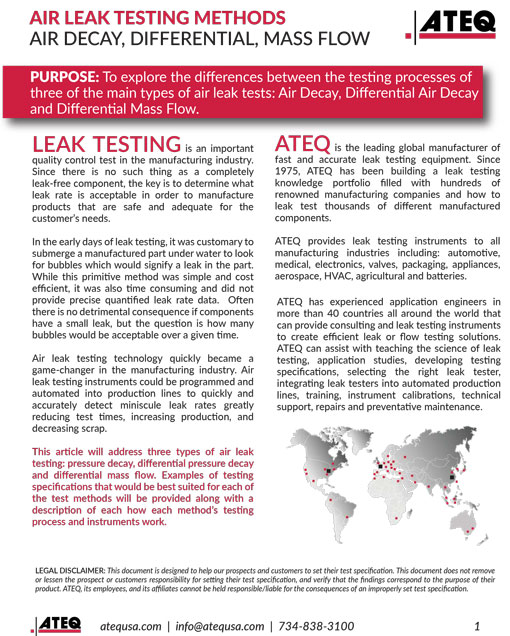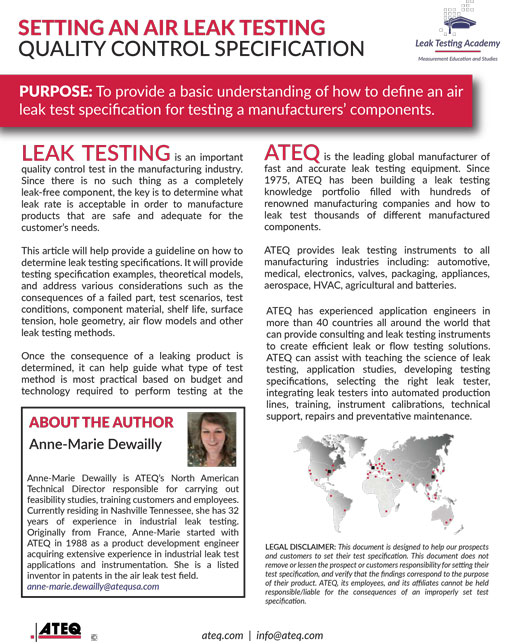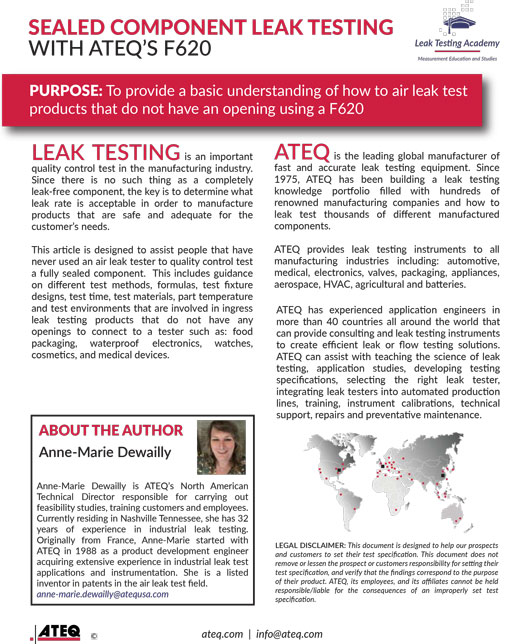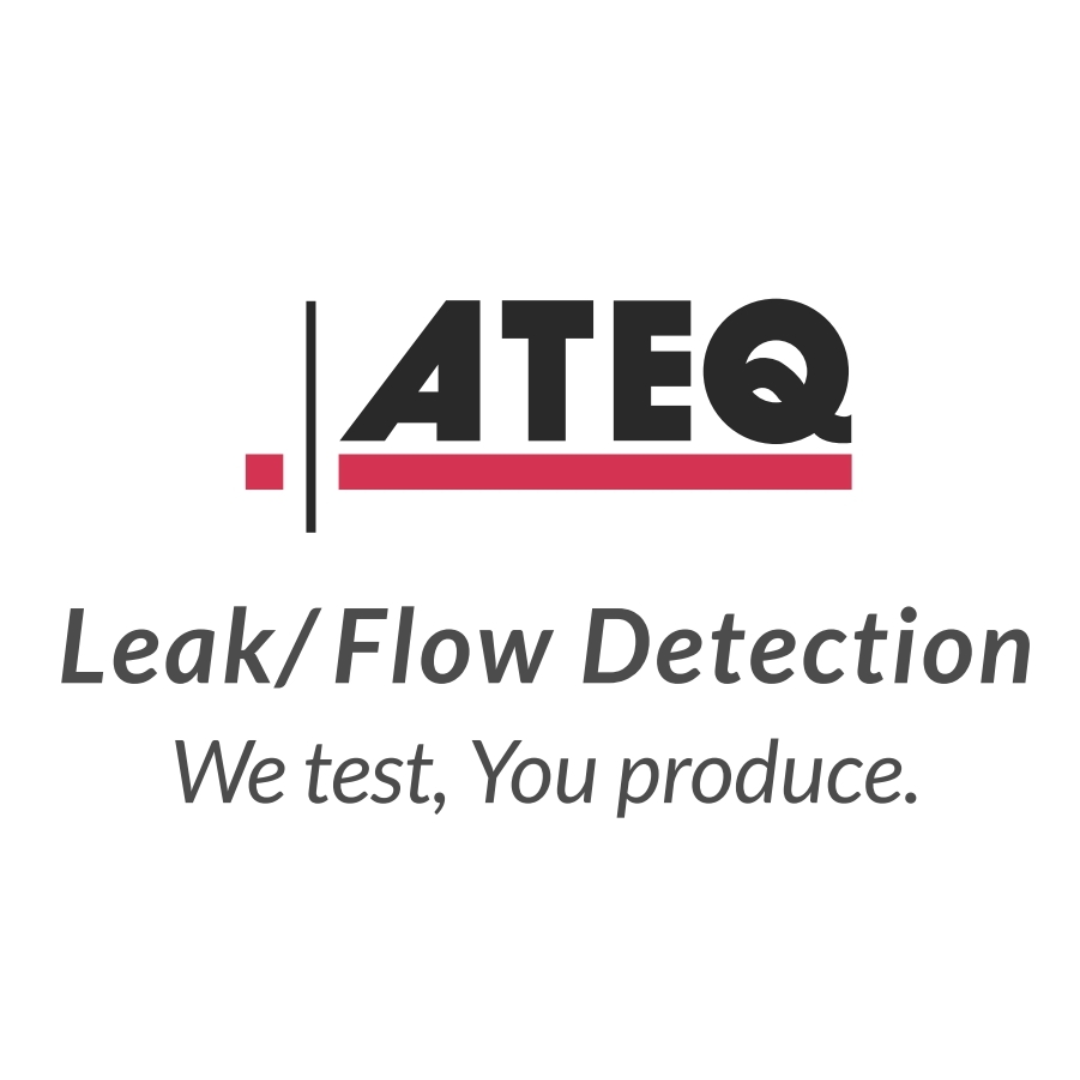WHITE PAPERS
This article will address three types of air leak testing: pressure decay, differential pressure decay and differential mass flow.
Examples of testing specifications that would be best suited for each of the test methods will be provided along with a description of each how each method’s testing process and instruments work.
This article is designed to assist people that leak test automotive transmissions for industrial quality control. While most automotive leak testing applications are usually best handled by a differential pressure air leak test, for a transmission leak test, ATEQ actually recommends a flow meter for testing internal and external leaks throughout the cavities of a transmission.
This article will help provide a guideline on how to determine leak testing specifications.
It will provide testing specification examples, theoretical models, and address various considerations such as the consequences of a failed part, test scenarios, test conditions, component material, shelf life, surface tension, hole geometry, air flow models and other leak testing methods.
This article is designed to assist people that have never used an air leak tester to quality control test a fully sealed component.
This includes guidance on different test methods, formulas, test fixture designs, test time, test materials, part temperature and test environments that are involved in ingress leak testing products that do not have any openings to connect to a tester such as: food packaging, waterproof electronics, watches, cosmetics, and medical devices
This article is designed to assist people that test an automotive engine for smaller leaks in industrial quality control. Proper understanding of engine technology, thermodynamics and pressure regulation can help manufacturers to have better quality control on their fully assembled engines. The simple use of multiple fill points, compressed air tanks, and heat exchangers are key factors in improving the performance of a leak test station.





